Genus species:
Accipiter cooperii

Enlarge Map
External Sites:
Cornell
USGS
Image Search
Number of Individuals Observed:1
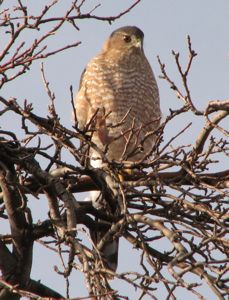
El Bosque
Colaptes auratus
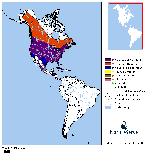
Enlarge Map
External Sites:
Cornell
USGS
Image Search
From below, shows red feather shafts in flight.
The upper photo shows key marks:
Black breast band.
Red feather shafts on underside of wings and tail.
Red mark under the eye indicates a male.
Female (middle photo): no red face mark.
Lower photo shows diagnostic white rump patch which is always visible in flight and sometimes visible when perched.
Number of Individuals Observed:2
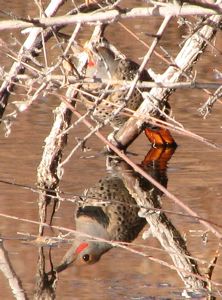
Cachanillas
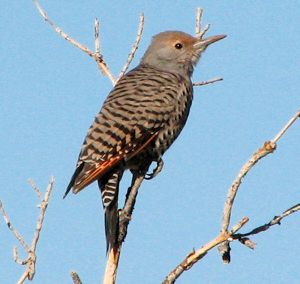
El Bosque
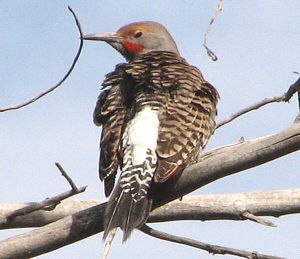
El Bosque
Pica hudsonia
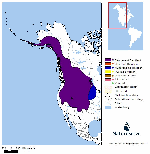
Enlarge Map
External Sites:
Cornell
USGS
Image Search
Number of Individuals Observed:1
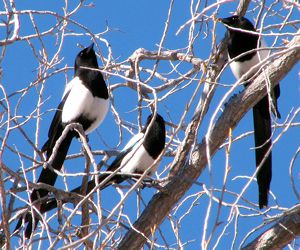
El Bosque
Corvus brachyrhynchos
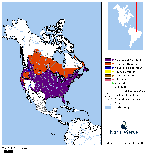
Enlarge Map
External Sites:
Cornell
USGS
Image Search
By sound, the crow's "caw" is familiar.
In flight, the crow's tail is often square or rounded.
Crows are very social and often appear in noisy groups.
Bill smaller and thinner than that of the Raven.
Number of Individuals Observed:4
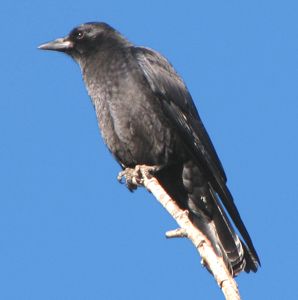
El Bosque
Corvus corax
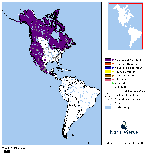
Enlarge Map
External Sites:
Cornell
USGS
Image Search
By sound, a throaty chortle or shout.
In flight, the tail often appears wedge shaped.
Ravens are often solitary, but sometimes appear with a few other individuals.
Often soars like a hawk. Crows do not.
Bill is thick and heavy. The throat is shaggy compared to the Crow.
Breeding pairs perform synchronized flight high overhead.
Number of Individuals Observed:1
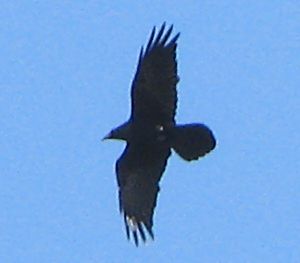
El Bosque
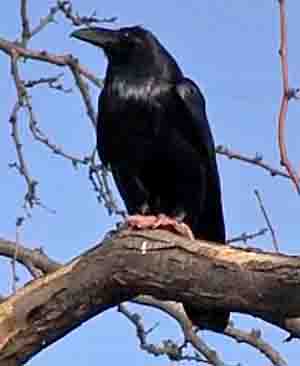
Camino de los Marquez, Santa Fe
Poecile atricapillus
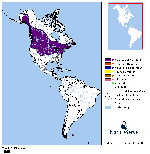
Enlarge Map
External Sites:
Cornell
USGS
Image Search
During breeding season, gives a high descending two pitched
fee-bee.
Number of Individuals Observed:2
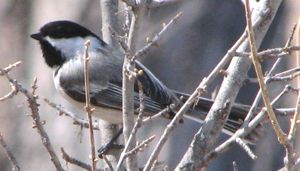
El Bosque
Cinclus mexicanus
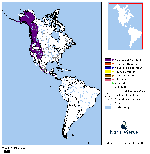
Enlarge Map
External Sites:
Cornell
USGS
Image Search
Often standing on rocks right at the water level, bobbing by bending its knees.
Feeds by walking on the bottom of the stream.
Number of Individuals Observed:2

El Bosque
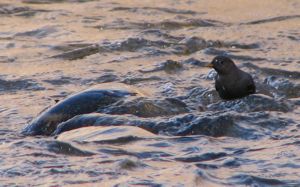
See Slide Show of Dipper Feeding
Junco hyemalis
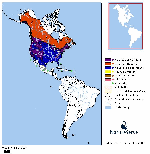
Enlarge Map
External Sites:
Cornell
USGS
Image Search
Almost always in flocks of 10-20 individuals. Identifiable by a very "dry" sounding "tck-tck" and by white showing on the sides of the tail, especially in flight.
Do a an Image Search (at left) to get an idea of the great variation in the plumage of this species.
Number of Individuals Observed:10
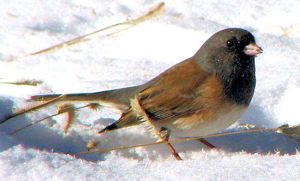
Dixon
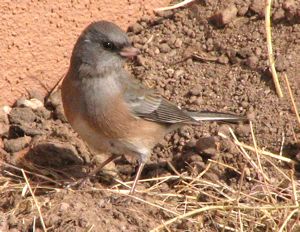
Dixon